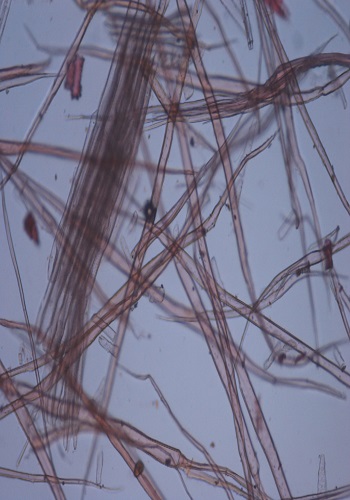The tree is native to India, Pakistan, Nepal, Afghanistan, Upper Burma, China and Japan. In Pakistan it is found in Northern areas, Dir, Swat, Hazara, Murree Hils and Azad Kashmir.
The heartwood is distinct from sapwood. The sapwood is grayish-white in color white heartwood is grayish-brown with darker streaks. The wood is straight-grained, medium-fine and somewhat even-textured.
The wood is semi-ring porous, growth rings are distinct with hand lens(10x). The vessels are large to medium size and small arranged with no specific pattern and 3-14/mm2 in number,75-210 µ in diameter.The tyloses are present in vessels. The wood rays are medium fine to fine ;6-8/ mm (tangential),1-5 cells wide, 3-12 cells in long, 35-231 µ in length, 5-23 µ in diameter.The Storied structure in tangential view is absent. The axial parenchyma is present, apotracheal ,banded and scalariform. The Fibers are non-libriform and non-septate, 0.12-0.82 mm in length,4-16 µ in diameter with 2- 4.4 µ wall-thickness.
 |
 |
 |
| Cross view of Wallnut wood | Tangential view of Wallnut wood | Wood fibers of Wallnut |
A good type of wood for carving and furniture making, very well suited for rifle stocks, eminently suitable for cabinet making and suitable for burls.
1. Pearson, R.S and H.P. Brown.1932. Commercial Timbers of India.pp 951-955.
2. Sheikh, M.I.1993. Trees of Pakistan. Pakistan Forest Institute, Peshawar.pp 76. 3. Siddiqui, K.M., M. Ayaz and I. Mahmood.1996. Properties and Uses of Pakistani Timbers. Pakistan Forest Institute, Peshawar.pp 17-18.